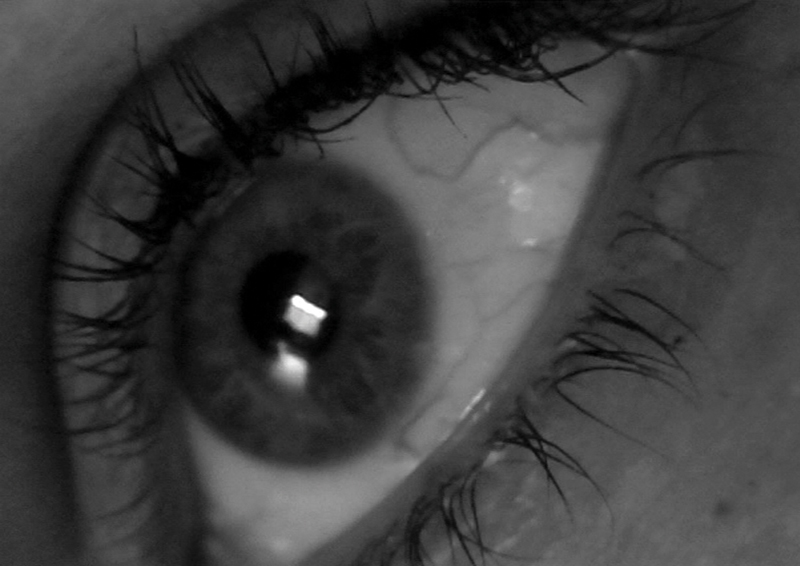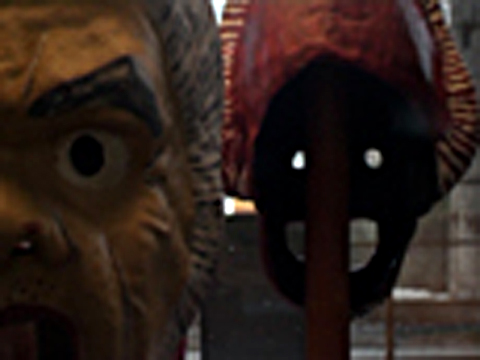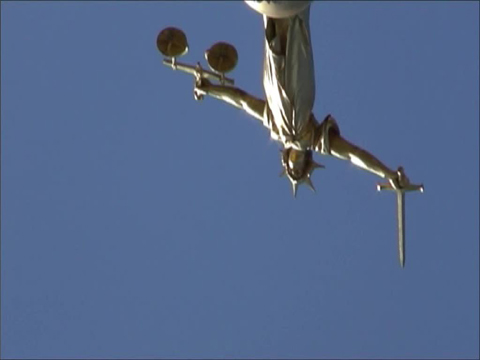
Metamorph. 2011
'Metamorph' is a part of 'The Flies' (2011) video series.
Starting as a video response to Sartre's play 'The Flies', in which the author's philosophical concept 'that one is condemned to be free' is explored and questioned by restaging the ancient Greek story of Electra and Orestes. Taking as a starting point this 'desire and necessity to be free', 'The Flies' video series present narratives based on fragmented mapping of the artist's body, explorations of psychological landscapes in the form of narratives by dismembered characters and the parts they play. Here the abject holds a key to an exposition of the moment when protagonists uncover, unveil and detach themselves from the truths they've come to hold.
When a throat speaks (as in 'Meta Morph'), we hear how Ressentiment expresses itself and, in a cyclical movement, like a serpent, consequently negates itself and consumes itself. As active and creative responses to the questioning of ideas, personal philosophical positions and convictions, these narratives become a stage for free expression and recognition of oneself as an independent individual, an individual with personal integrity.
Blackmail

Blackmail. 2008
Starting with Delivery, Blackmail is the second part of a collaborative project which documents an ongoing quest for attaining personal/existential freedom by exploring the idea of 'inexchangeable inwardness' through the example of the architectural uncanny and how the concept of action within the constructed reality of the video can be manifested. In this pursuit for subjectivity in existence, the concept of 'outside and inside' is explored suggesting that inner reality can only be perceived by the subject and inferred by those perceiving it as only a possibility.
The persona of the 'blackmailer' was conceived to articulate the inner critique that restricts the process of attaining creative and existential freedom. Through a variety of visual symbols and metaphors, references, suspense genre devices and philosophical suggestions, the central character of the film is pressed into a journey in order to recover the meaning of these occurrences only to discover the infinite fluctuations and dimensional reversals of an all-too tenuous reality.
Therefore her aspiration for a freedom from such inner trappings leads to ever greater restrictions, implying the impossibility for resolution within the vicious circle of their recurring manifestations.
Capital

Capital 2008 (07:05)
This film presents a conjunction between two different records inspired by the prospect of a short stay in Rome. The first record was borne out of the question 'How does one take an original photograph in this most photographed of cities?' and the second comes from a letter written by a philosopher to his own future self which is to be read in 'The Eternal City'.
By combining these two separate enquiries we see a parallel emerge between the concepts of historical time and psychological time; an individual man's future is defined amidst the ruins of Man's past whilst, simultaneously, an individual man's past leaps forward to seize upon and ruin the prospects of Man’s future.
Therein we see footage of tourists taking their customary 'I was there!' photographs, unaware that the record of their 'being-there' has become ensnared in this complex ontological dispute concerning whether a man can 'be-there' in his own present, or whether he is forever pulled toward the ruins of regret or the ideals of anticipation. And due to this complication, we must also identify the 'unheimlich' within these images of Rome; for not only do they portray the ruins of past civilisation, but the future ruination of all civilisations. ©MariannaandDaniel 2008
Blue is the Band

Blue is the Band 2008 (07:35)
'Blue is the Band' is a short film that depends upon the chance encounter for its flavour, each scene documenting a single journey around the capital which captures a sort of 'expected unexpectedness' about human experience, hinting at the disingenuousness at the core of being. The film initially sets out to purposefully record what can neither be planned nor expected, but it is from the complications and contradictions inherent in this 'expected unexpectedness' that the film derives its dialogue, (which tips its hat ironically to Sartre’s ‘La Nausee’;) the protagonist describes how this malaise has begun, the way in which it has 'come to be', and also where he and 'it' are going. The destination proves ultimately beyond individuality, a place that cannot be 'chanced upon' and which cannot be envisioned itself until individuality has been achieved and overstepped. The Nausea of existence is heightened by the snare of his 'expected unexpectedness', about the impossibility of an authentic life for himself, and he seeks an exit through the Nausea ©MariannaandDaniel 2008